Methacryloyl chloride
Synonym(s):Methacrylic acid chloride;Methacrylic chloride;2-Methyl-2-propenoyl chloride;2-Methylprop-2-enoyl chloride;2-Methylpropenoic acid chloride
- CAS NO.:920-46-7
- Empirical Formula: C4H5ClO
- Molecular Weight: 104.53
- MDL number: MFCD00000716
- EINECS: 213-058-9
- SAFETY DATA SHEET (SDS)
- Update Date: 2025-12-08 10:09:45
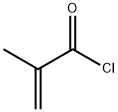
What is Methacryloyl chloride ?
Chemical properties
clear slightly colored liquid
The Uses of Methacryloyl chloride
Methacryloyl chloride is used in the preparation of polymeric materials. It reacts with L-histidine and forms functional monomer. It is also used to prepare monomer 2-methacrylamido-caprolactam, amide monomers by amidation.
What are the applications of Application
Methacryloyl chloride is used in the manufacture of polymers:
Monomer 2-methacrylamido-caprolactam was prepared by reacting methacryloyl chloride with racemic a-amino-e-caprolactam.
Functional monomer was prepared by reacting methacryloyl chloride and L-histidine.
A series of amide monomers were synthesized by amidation of methacryloyl chloride with amines and grafted onto commercial poly(ether sulfone) (PES) membranes using irradiation from atmospheric pressure plasma (APP).
Reaction of methacryloyl chloride with the hydroxyl groups on the surfaces of HEMA/NVP microspheres was performed, leading to the introduction of polymerisable double bonds onto the surfaces of microspheres.
Star-shaped poly(d,l-lactide) oligomers with 2, 3 and 6 arms were synthesised, end-functionalised with methacryloyl chloride and photo-crosslinked in the presence of ethyl lactate as a non-reactive diluent.
General Description
Methacryloyl chloride is the clear to slightly colored acid chloride of methacrylic acid. It appears as a liquid of density 1.07g/cm3, boiling point 95-96°C, and flash point 55°F. Highly toxic. Supplied in technical grades of varying purity. Monomethyl ether hydroquinone is added as a stabilizer to prevent auto polymerization. Reaction with diisopropyl ether in presence of metal salts is rigorous.
Air & Water Reactions
Highly flammable. Reacts with water to produce gaseous hydrogen chloride (corrosive and toxic).
Reactivity Profile
Methacryloyl chloride is incompatible with strong oxidizing agents, alcohols, bases (including amines). Can polymerize violently; but the polymerization reaction can be inhibited by the addition of phenolthiazine. May react vigorously or explosively if mixed with diisopropyl ether or other ethers in the presence of trace amounts of metal salts [J. Haz. Mat., 1981, 4, 291].
Hazard
Flammable and corrosive liquid.
Purification Methods
Purify the ester by fractional distillation. If it contains the acid (OH bands in the IR) then add redistilled SOCl2 (with cooling) and cuprous chloride (ca to 2%), reflux the mixture gently for 1hour and fractionate it through a 1metre column packed with glass helices. Redistillation then provides the acid chloride in high purity as a colourless liquid. It is necessary to keep the apparatus moisture free (use CaCl2 tubes), Stabilise it with 0.05% of 2,6-di-tert-butyl-4-methylphenol. [Lal & Green J Org Chem 20 1032 1955, Beilstein 2 IV 1537.]
Properties of Methacryloyl chloride
| Melting point: | -60°C |
| Boiling point: | 95-96 °C(lit.) |
| Density | 1.08 g/mL at 20 °C |
| refractive index | n |
| Flash point: | 57 °F |
| storage temp. | 2-8°C |
| solubility | Chloroform |
| form | Liquid |
| color | Clear to slightly colored |
| Water Solubility | Miscible with alcohols, ethers and organic solvents. Slightly miscible with water. |
| Sensitive | Moisture Sensitive |
| BRN | 878175 |
| Stability: | Light and Moisture Sensitive |
| CAS DataBase Reference | 920-46-7(CAS DataBase Reference) |
| NIST Chemistry Reference | Methacryloyl chloride(920-46-7) |
| EPA Substance Registry System | Methacryloyl chloride (920-46-7) |
Safety information for Methacryloyl chloride
| Signal word | Danger |
| Pictogram(s) |
 Flame Flammables GHS02  Corrosion Corrosives GHS05  Skull and Crossbones Acute Toxicity GHS06 |
| GHS Hazard Statements |
H225:Flammable liquids H302:Acute toxicity,oral H314:Skin corrosion/irritation H317:Sensitisation, Skin H330:Acute toxicity,inhalation H412:Hazardous to the aquatic environment, long-term hazard |
| Precautionary Statement Codes |
P210:Keep away from heat/sparks/open flames/hot surfaces. — No smoking. P273:Avoid release to the environment. P280:Wear protective gloves/protective clothing/eye protection/face protection. P303+P361+P353:IF ON SKIN (or hair): Remove/Take off Immediately all contaminated clothing. Rinse SKIN with water/shower. P305+P351+P338:IF IN EYES: Rinse cautiously with water for several minutes. Remove contact lenses, if present and easy to do. Continuerinsing. |
Computed Descriptors for Methacryloyl chloride
| InChIKey | VHRYZQNGTZXDNX-UHFFFAOYSA-N |
Methacryloyl chloride manufacturer
JSK Chemicals
ALS India Life Sciences Pvt. Ltd
GK Chemicals
ASM Organics
New Products
4,4-Difluoropiperidine hydrochloride tert-butyl 9-methoxy-3-azaspiro[5.5]undecane-3-carboxylate Indole Methyl Resin N-Isopropylurea N,N-Dicyclohexylcarbodiimide(DCC) MELDRUMS ACID 5-METHYLISOXAZOLE-4-CARBOXYLIC ACID Magnessium Bis glycinate Zinc ascorbate 1-bromo-2-butyne 2-acetamidophenol 9(10H)-anthracenone Erythrosin B, 4-Piperidinopiperidine 2-((4-morpholinophenylamino) (methylthio) methylene) malononitrile 2,4-dihydroxybenzaldehyde 3-(4-morpholinophenylamino)-5-amino-1H-pyrazole-4-carbonitrile Methyl 2-methylquinoline-6-carboxylate 2,6-dichloro-4-nitropyridine 4-Bromo-2-chlorobenzonitrile 2-(benzylamino)acetic acid hydrochloride 4-(tert-Butoxycarbonylamino)but- 2-ynoic acid 3,4-dihydro-2H-benzo[b][1,4]dioxepine 1-Phenyl-1-cycloprppanecarboxylicacidRelated products of tetrahydrofuran
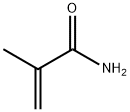
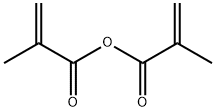


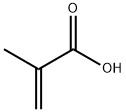



You may like
-
 920-46-7 Methacryloyl chloride 98%View Details
920-46-7 Methacryloyl chloride 98%View Details
920-46-7 -
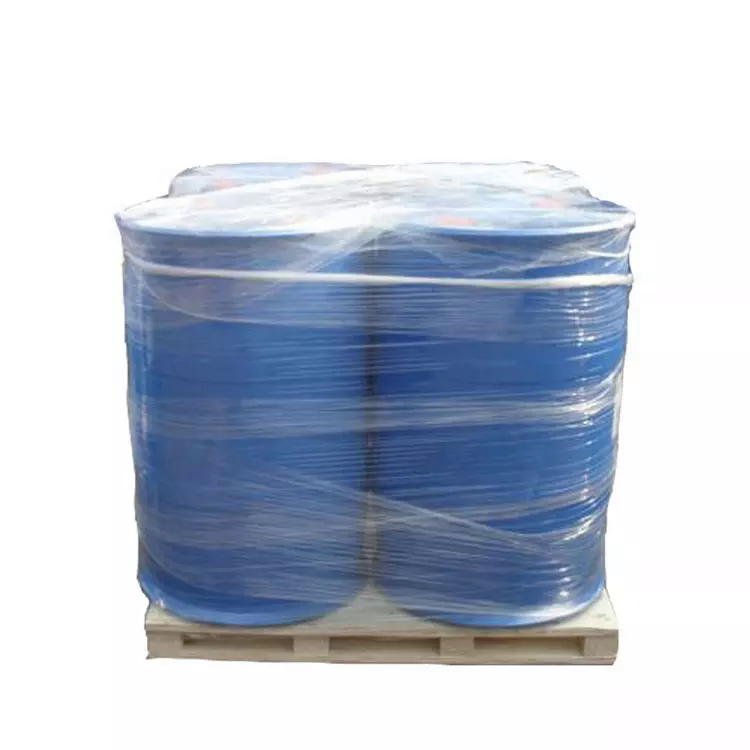 Methacryloyl chloride 98%View Details
Methacryloyl chloride 98%View Details -
 Methacryloyl chloride, stabilized CAS 920-46-7View Details
Methacryloyl chloride, stabilized CAS 920-46-7View Details
920-46-7 -
 Methacryloyl chloride CAS 920-46-7View Details
Methacryloyl chloride CAS 920-46-7View Details
920-46-7 -
 920-46-7 Methacryloyl chloride 99.00%View Details
920-46-7 Methacryloyl chloride 99.00%View Details
920-46-7 -
 Methacryloyl chloride (920-46-7), 98%, solidView Details
Methacryloyl chloride (920-46-7), 98%, solidView Details
920-46-7 -
 Methacryloyl Chloride Cas No. 920 46 7, GLR InnovationsView Details
Methacryloyl Chloride Cas No. 920 46 7, GLR InnovationsView Details
920-46-7 -
 Methacryloyl Chloride Cas No. 920 46 7, LiquidView Details
Methacryloyl Chloride Cas No. 920 46 7, LiquidView Details
920-46-7
